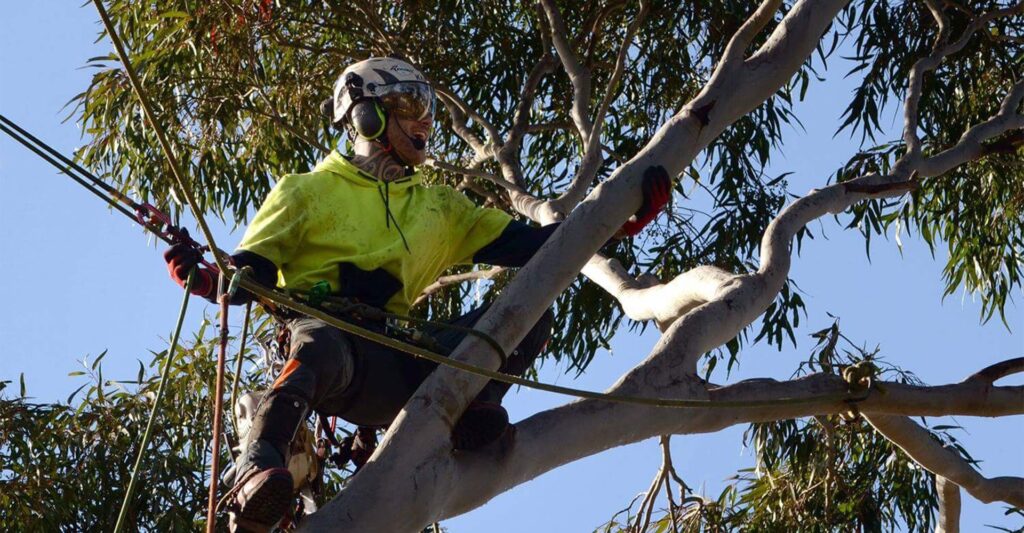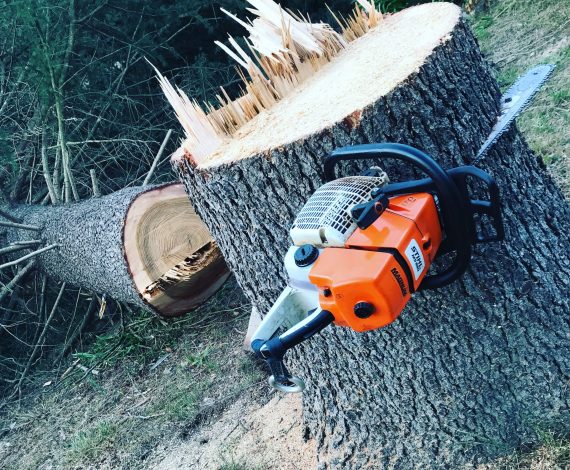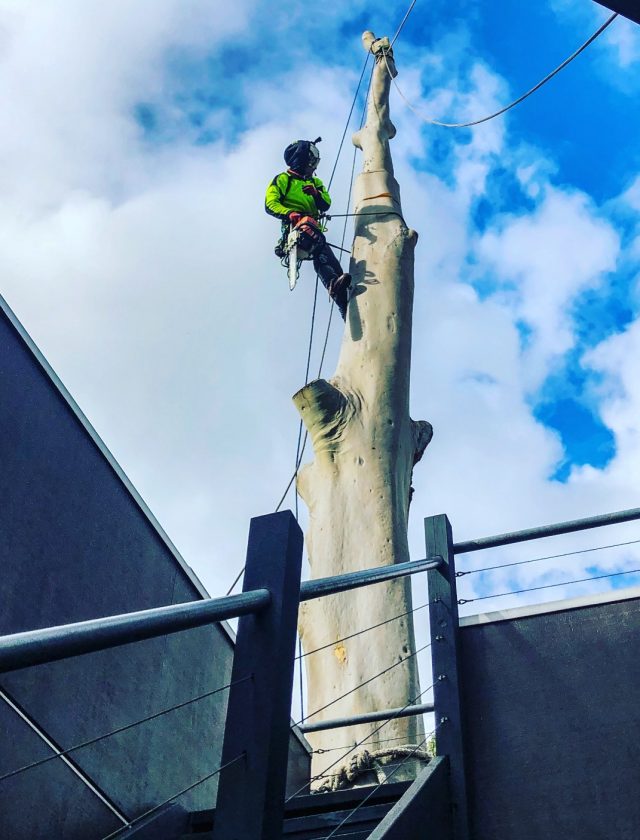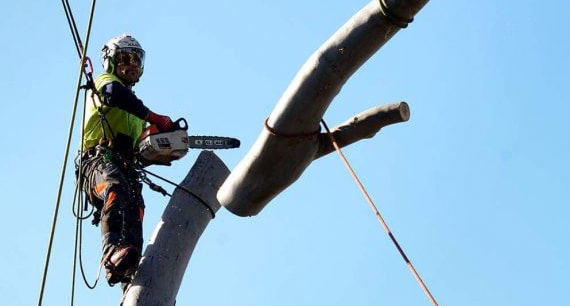Being An Arborist can be a highly dangerous job due to many factors ranging from physical danger, machinery danger and psychological stress. Arboriculture, a crucial profession in maintaining New Zealand’s rich green landscapes, is laden with inherent dangers often unseen by those outside the industry. This comprehensive exploration delves deep into the risks faced by arborists in New Zealand, drawing parallels with the challenges faced by their American counterparts, to underscore the high-risk nature of this vital yet perilous profession.
Understanding the Arborist’s Role
An arborist’s job involves much more than trimming trees. They are responsible for the health and safety of trees in both urban and rural settings. Their work ranges from careful pruning to managing complex tree diseases and executing high-risk tree removals. Arborists in New Zealand often operate under conditions akin to their American counterparts, finding themselves working near live electrical wires, high above the ground, and using heavy machinery that, if mishandled, could lead to severe injuries or even fatalities.
The Dangerous Realities of Arboriculture
- Physical Dangers: The job’s most apparent danger is working at significant heights. In New Zealand, as in America, arborists frequently work 30 feet or more above the ground, where a fall can have disastrous consequences. Moreover, they operate powerful machinery like chainsaws and chippers, which require constant vigilance to avoid serious injuries.
- Biological and Environmental Risks: Arborists regularly encounter various biological hazards, including exposure to toxic plants and insect stings. The unpredictable weather conditions in New Zealand, particularly in areas with strong winds and heavy rain, add another layer of risk, making tree work even more challenging and dangerous.
- Psychological Stressors: Beyond the physical risks, the job involves significant psychological pressure. Arborists must constantly be alert to ensure not only their safety but also that of their team and the public. This high level of vigilance can lead to stress and fatigue, impacting their overall well-being.
Risk Categories in Arboriculture
Arborists typically face two primary risk categories:
- Risk of Life or Personal Wellbeing: This includes the hazards associated with working at heights, dealing with electrical wires, slippery conditions, falling limbs, and handling sharp equipment. These risks necessitate a comprehensive understanding of safety protocols and situational awareness.
- Risk of Property: The task of tree removal or pruning carries risks beyond personal injury; it also poses potential damage to property. Incorrect techniques can lead to falling trees or limbs causing severe damage to homes, vehicles, or neighboring properties.

The High Cost of Arboriculture
Operating an arboriculture business is a costly affair, reflective of the high-risk nature of the job. The need for specialized equipment like cranes and stump grinders, coupled with the high cost of insurance due to the dangerous nature of the work, contributes significantly to the overall cost of tree removal services.
Safety Protocols and Training
In New Zealand, safety is the cornerstone of arboriculture. Arborists are required to follow strict safety protocols and wear protective gear, including helmets, eye protection, and harnesses. They undergo extensive training, which covers the safe operation of equipment, emergency procedures, and effective risk assessment strategies. This rigorous training is crucial for preparing arborists to handle the potential dangers they face daily.
Understanding the High Service Costs
The rates charged by arborists reflect the operational costs and the high stakes involved in their work. These costs include maintaining and upgrading equipment, paying high insurance premiums, and ensuring the highest safety standards are met. Customers are encouraged to view these costs as an investment in safety and quality.
The Cost of Running an Arboriculture Business
The arboriculture industry, while vital for maintaining and managing our natural landscapes, is not just a high-risk profession but also a costly one to operate. The evolution of the trade over the years has significantly influenced the operational costs associated with running a successful arborist business.
Advanced Equipment Requirements
Gone are the days when arborists could rely solely on a chainsaw and rope. Modern arboriculture, especially in urban and suburban settings where neighborhoods are densely populated, demands more sophisticated equipment. The complexity of jobs has increased, partly due to the proximity of structures and the varied sizes and types of trees within these environments. As a result, arborists now require an arsenal of advanced machinery to perform their tasks both efficiently and safely. This equipment includes:
- Bucket Trucks: These vehicles, equipped with aerial work platforms, are essential for reaching high branches safely, making the pruning and removal of trees more manageable and less hazardous.
- Cranes: For particularly large trees or those in challenging locations, cranes may be necessary to remove sections of the tree systematically and safely.
- Stump Grinding Machines: After a tree is removed, stump grinders are used to break down the remaining stump into wood chips, leaving the area ready for other uses.
Investing in such equipment is a significant financial undertaking for any arborist business. Not only is the initial purchase costly, but these machines also require ongoing maintenance and occasional repairs, further adding to operational expenses.
Licensing and Insurance Costs
Operating an arborist business legally and ethically in New Zealand entails obtaining the appropriate licensing and comprehensive insurance coverage. Given the high-risk nature of arboriculture work, insurance is a critical component of the business model. Insurance not only protects the business and its employees but also provides peace of mind to clients. The various forms of insurance an arborist business might require include liability insurance, workers’ compensation, and equipment insurance.
However, insurance in this sector is far from affordable. The potential for severe injuries and the costly nature of the equipment involved drive up insurance premiums. As a client looking to hire an arborist, it is prudent to request and review a company’s insurance policies. Ensuring that the company has active, adequate coverage is crucial. This step is not just about verifying legal compliance but also about safeguarding your property and interests.
Financial Implications for Clients
These operational costs invariably impact the pricing of arborist services. When clients receive quotes for tree removal or other arborist services, it’s important to recognize that the costs reflect not only the skill and risk involved in the work itself but also the overhead expenses of running the business. Understanding these factors can help clients appreciate the value of the services they are receiving.
Personal Perspectives and Industry Efforts
Veteran arborists emphasize the importance of strict adherence to safety protocols, regardless of the task’s perceived simplicity. The industry is committed to continuous improvement in safety, with investments in safer equipment, regular skill-upgrading workshops, and adopting the latest safety technologies.
Legal Framework and Insurance
Arborists in New Zealand operate within a framework of strict health and safety laws. Proper licensing and comprehensive insurance coverage are mandatory, ensuring safe and reliable service delivery. This insurance not only protects the arborists but also the clients they serve.
Conclusion
While being an arborist in New Zealand is fraught with risks, the industry’s commitment to safety, continuous training, and adherence to legal requirements help mitigate these dangers. The profession’s high costs reflect the significant risks and the level of expertise required. Therefore, when hiring an arborist, it is crucial to choose professionals who are not only skilled but also adequately insured.
Call to Action
For those looking to join the arboriculture profession, embracing rigorous safety training and a strong commitment to safe practices is essential. For customers, selecting an insured and experienced arborist is critical for ensuring safe, quality work. If you require arborist services, don’t hesitate to reach out for a comprehensive consultation or quote, keeping in mind the complexity and risks these professionals navigate to maintain our cherished green spaces. If you need an arborist Hawkes Bay, give us a call.
About the Author:
Mike Veail is a recognized digital marketing expert with over 6 years of experience in helping tradespeople and small businesses thrive online. A former quantity surveyor, Mike combines deep industry knowledge with hands-on expertise in SEO and Google Ads. His marketing strategies are tailored to the specific needs of the trades sector, helping businesses increase visibility and generate more leads through proven, ethical methods.
Mike has successfully partnered with numerous companies, establishing a track record of delivering measurable results. His work has been featured across various platforms that showcase his expertise in lead generation and online marketing for the trades sector.
Learn more about Mike's experience and services at https://theleadguy.online or follow him on social media:



